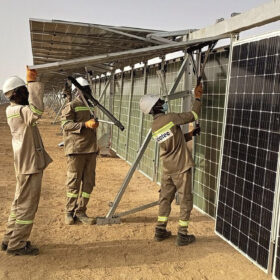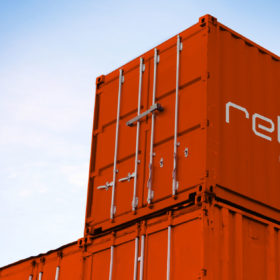African solar looks beyond donor nations for investment
Multilateral organizations the World Bank and African Development Bank (AfDB) have played a key role in the development of African solar and want to attract more private capital to a continent with at least 40% of the world’s solar irradiation but currently only 1% of its PV generation capacity.
PV-driven lighting solution for rural areas
Scientists have created a lighting system based on the AEM10941 solar harvester developed by Belgium-based E-peas. The system is reportedly able to provide a full brightness run time of 10 hours.
Duffing oscillator can increase low output voltages in PV systems at dawn, sunset
Scientists have utilized a device based on the Duffing oscillator to solve the problem of PV systems’ low efficiency at low input voltages at dawn and sunset. Its performance was reportedly better than that of a conventional DC-DC boost converter in amplifying weak input voltages.
Release by Scatec to expand solar, storage capacity in Cameroon
Release by Scatec, a distributed-generation solar and battery energy storage systems (BESS) solution, is set to expand its solar and storage capacity in Cameroon by 28.6 MW and 19.2 MWh across two solar plants.
Cameroon exempts imported PV components from customs duties
PV modules, inverters, charge controllers, batteries and cables intended for rooftop solar systems will benefit from exemptions from customs duties until 2025.
Weekend Read: Install grid-connected solar, rinse, repeat
Will a redeployable solar and energy storage solution be the answer to unreliable grid electricity across much of Africa, as its developer proposes? Or will it merely be a temporary solution that will see cash-strapped utilities kick the can of universal energy access further down the road?
Scatec switches on 30 MW of PV linked to 20MW/19MWh of storage in Cameroon
Scatec has turned on two solar-plus-storage facilities in northern Cameroon, with 30 MW of solar and 20 MW/19 MWh of energy storage.
Testing different PV module brands in photovoltaic-thermal architectures
Solar modules from Trina Solar, Canadian Solar, and Felicity Solar were tested in a prototype of a photovoltaic-thermal collector that uses excess heat from the PV elements to heat water. The system uses a thermally insulated helical coil heat exchanger to recover panel heat and a solenoid valve to allow water recirculation when the temperature below the PV module rises significantly.
Scatec brings containerized solar-plus-storage system to Cameroon
Two projects in the northern region of the African nation are set to bring 36 MW of solar and 20 MW/19 MWh of storage online, with the first facilities due to start generating within days.
Storage and PAYG critical to deployment of African off-grid renewables
The former need not necessarily relate to conventional lithium-ion batteries, however, as a recent webinar staged by Solarpower Europe and EU body GET.invest discovered.










